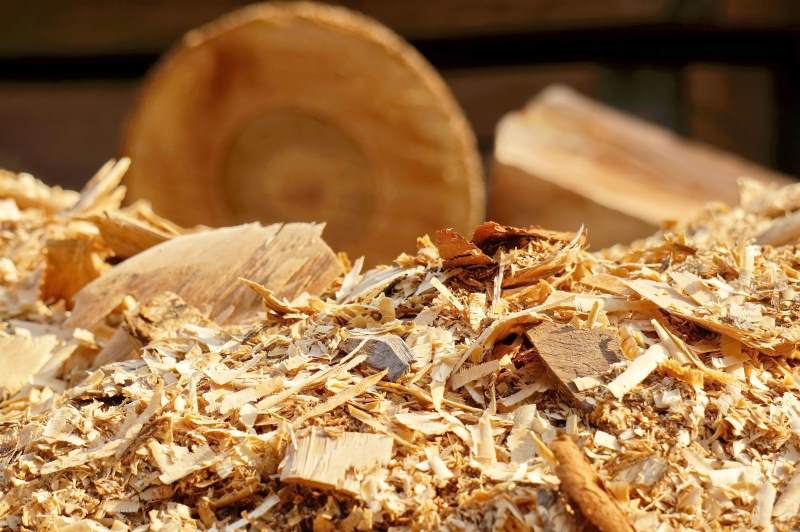What Happens When You Bury An Old Tire?
Burying old tires may be more convenient than shredding them, but nothing good comes from it. There are many hazards to burying tires, but these three are the most common.
Water Contamination
Did you know that tires float? It’s true! When an old tire is buried in a landfill, it can slowly start to build up methane, which is a gas produced by decomposing waste. Because of the low density of methane, the tires will, over time, “float” to the surface. This is not good because it disrupts the design of the landfill. These surfaced tires can even end up contaminating groundwater by increasing leachate production in the landfill.
Fire Hazards
The threat of fire is another danger caused by tires in landfills. Since methane is flammable, the collected gases in the tires may start a fire, which would be very bad news. Not only are tire fires very difficult to extinguish, but they may also release toxic chemicals into the air as the rubber burns. Dark, thick smoke rises from the tire fire, carrying with it butadiene and styrene.
In 1999, a pile of 7 million tires in Stanislaus County, California, was struck by lightning, and the resulting fire burned for almost a month. During that time, half a million gallons of pyrolytic oil were drained from the tires, a result of the extreme heat. That oil flowed into a nearby stream, contaminating it with a wide variety of chemicals and metals – and causing it to catch fire!
Disease
Did you know that rats love to nest inside of old tires? And when water collects inside the tire, it becomes a breeding ground for mosquitoes. Both these pests can increase the spread of disease in a community. Leptospirosis, salmonellosis, and rat bite fever are a few of the diseases transmitted by rats. And of course, everyone knows about the dangers of mosquito bites, which can transmit yellow fever, zika virus, and West Nile virus, among other illnesses.
Shred, Instead!
Shredding is a much safer tire recycle method – for us as humans, and for the Earth! Shredded tires do not collect methane, and so pose no risk of fire. These tires have been used as light fill material in some landfills, because research shows that very little leaching occurs when the tires are shredded. Research in Illinois landfills showed that replacing sand and rock (from a drainage layer) with shredded tire “works just as well and costs less.”
Disposing of shredded tires by creating a drainage layer is an excellent alternative to burying them whole. But there are also other ways to use that shredded tire. Recycle programs are able to take shredded scrap tires and use them for playground surfaces, athletic tracks, and even roads!
These uses aren’t just a clever way of recycling tires; there is a lot of benefit to creating rubberized surfaces. For instance, rubberized asphalt roads can reduce road noise by up to four decibels, thereby reducing the need for sound barriers along busy highways. And the rubbery, slightly soft surface created by tire crumbs is the perfect choice for playgrounds, where children fall down on a regular basis!
Tire Shredding – Tire Recycling
So, it is obvious that shredding tires is the better way to dispose of scrap tires. But how can you do it? Many recycling companies and landfills use a tire shredder, a machine which shreds whole tires into small pieces. These companies will accept whole tires, for a fee, and shred them for you.
Other companies who aren’t in the recycling industry, but who create a lot of scrap tires, will invest in tire shredders. Rather than paying someone else to do the work, these savvy companies are able to save money by shredding their own scrap tires prior to disposal. If you have a lot of tires to dispose of, could a tire shredder save you money too?
While shredding old tires might seem like a waste of time and too costly, it’s important to remember the benefits. And, if cost is an issue, a tire shredder can help you recycle your old tires and turn them into a profitable product.
Eco Green Equipment helps all sorts of people find a cost-effective and eco-friendly way to get rid of old scrap tires. Contact us today for pricing and more information about our shredders and other recycling equipment.
Sources: Kloeppel, James E. “Shredded Tires A Cheap, Environmentally Friendly Way To Cover Landfills.” September 28, 2005. Inside Illinois. Accessed January 31, 2017. http://news.illinois.edu/NEWS/05/0928tires.html.
Elnour, Mohamed G., and Hala A. Laz. “Tire Hazardous, Disposal and Recycling.” Journal of Applied and Industrial Sciences, April 05, 2014, 63-73.
Institute of Scrap Recycling Industries. The Scrap Recycling Industry: Tires. 2016. http://www.recycledrubberfacts.org/wp-content/uploads/2016/03/fact-sheet-tires.pdf.
“Waste Tire Recycling.” Iowa Department of Natural Resources. Accessed January 31, 2017. http://www.iowadnr.gov/Environmental-Protection/Land-Quality/Waste-Planning-Recycling/Tires.
“Burn Rubber: The World’s 9 Worst Tire Fires”. 2013. Webecoist. Accessed January 31, 2017. http://webecoist.momtastic.com/2013/05/28/burn-rubber-the-worlds-9-worst-tire-fires/2/.




